Peep the Waterfront Park at Burg's Domino Sugar Mega-Project That Will Open to Public in June
When Domino Park opens to the public, it will have waterfront seating, picnic areas, bocce and volleyball courts, and a playground designed to resemble a colorful version of the former factory here.

The Williamsburg waterfront is about to get a lot more open green space.
When Domino Park opens to the public June 10, it will have waterfront seating, picnic areas, bocce and volleyball courts, and a playground designed to resemble a colorful version of the former factory here.
The publicly accessible green space component of the larger Domino Sugar Refinery redevelopment from developer Two Trees, Domino Park will stretch from South 5th Street to Grand Street when completed.
The day before a Thursday tour of the under-construction park, some of the trees had just been planted, which you can see in the images below.
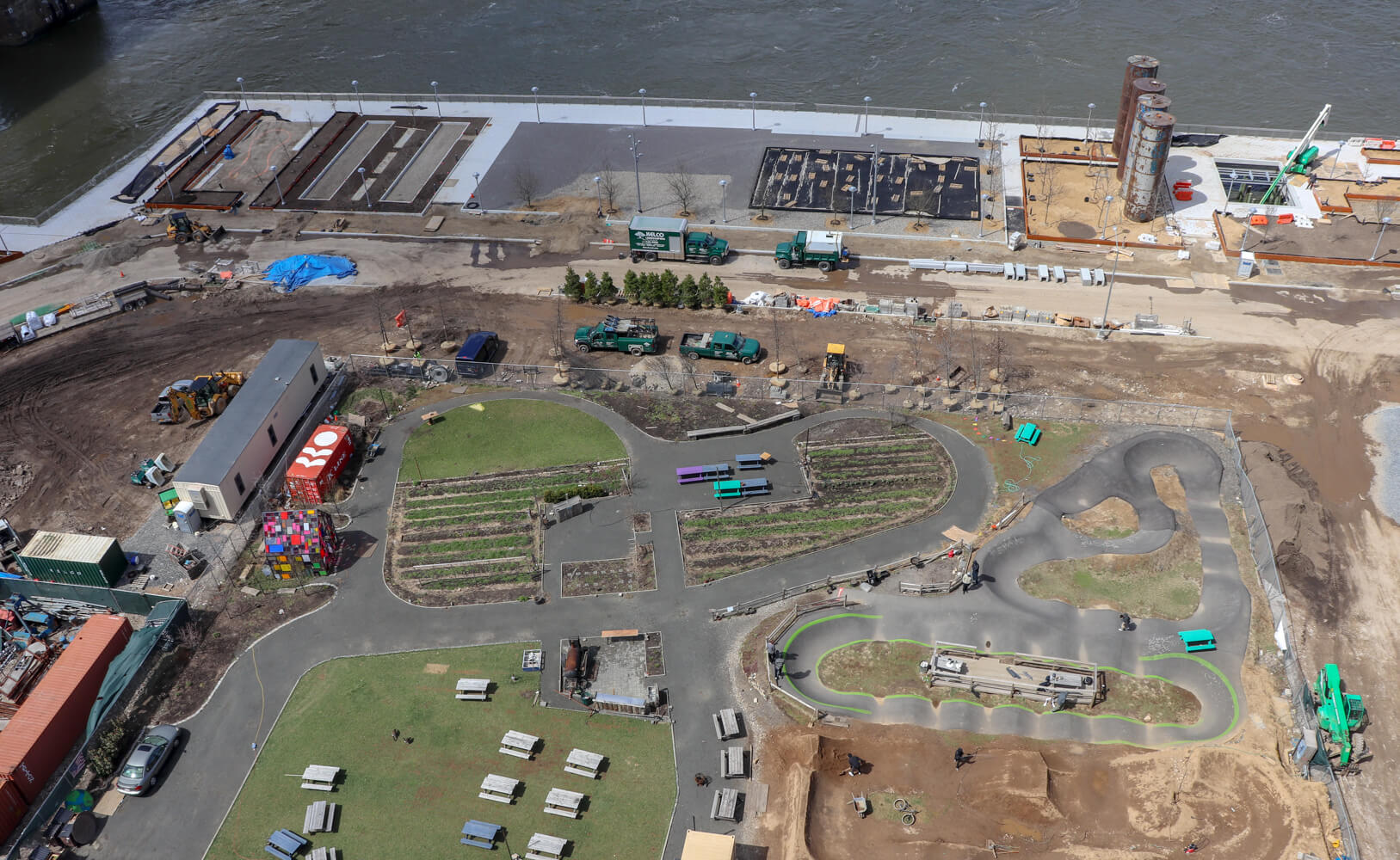
Above, you can also see the beginnings of the extension of River Street, which will stretch from North 3rd Street to South 5th Street. By extending River Street, the designers wanted to convey that “this wasn’t just the backyard of the buildings,” said Lisa Switkin, senior principal at James Corner Field Operations. “It’s a public park on a public street.”
Landscape architecture firm James Corner Field Operations designed the park, while SHoP created the master plan for the Domino site. James Corner also had a hand in Manhattan’s influential High Line.
The temporary park opened in the summer of 2015 by the developer is still in use, which you can see above, even as construction is happening all around it. It will eventually become an open area, accessible from Kent Avenue. No word yet on whether Tom Fruin’s multicolored stained glass house will stay in the park.
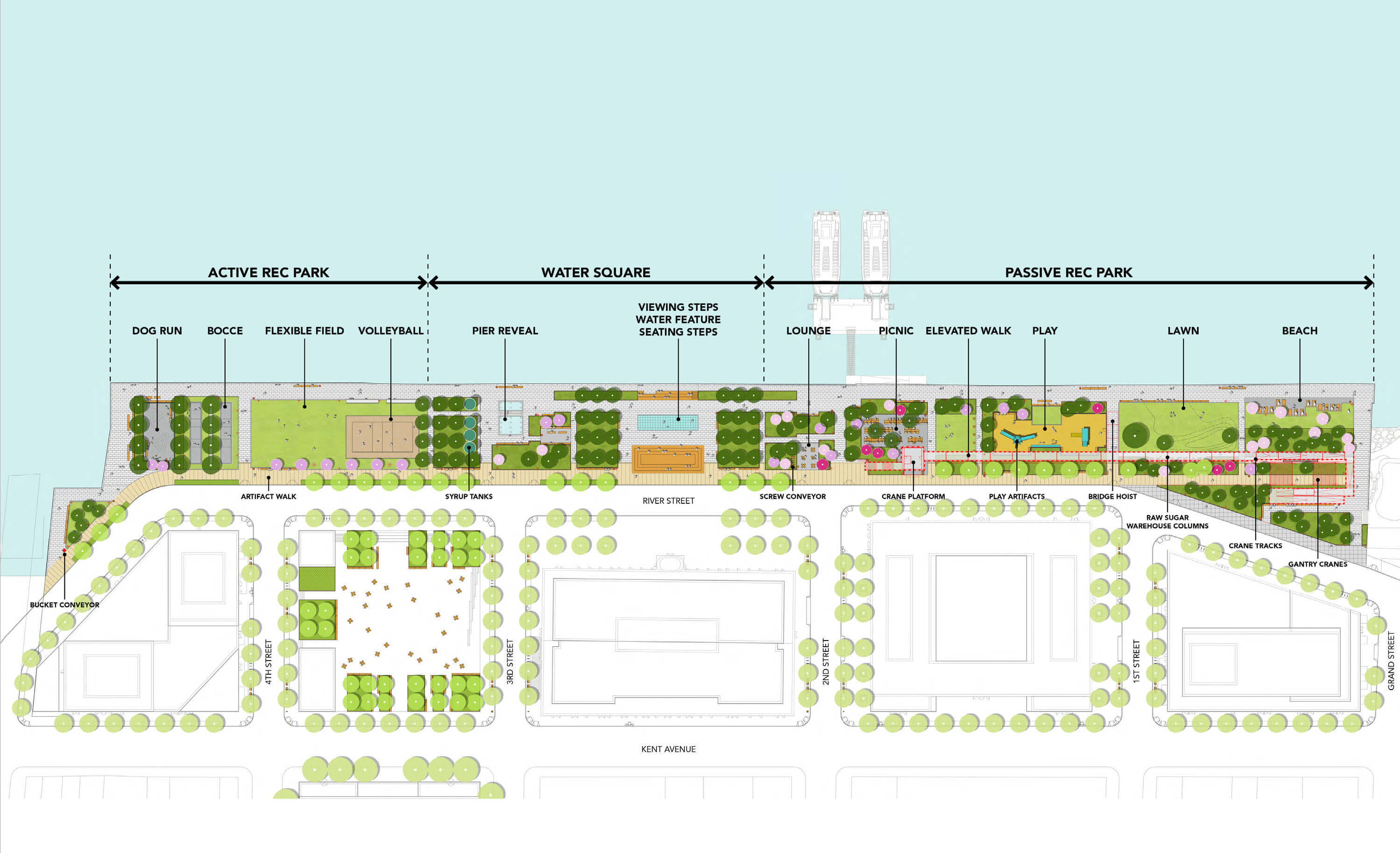
On the southern end of the park — what the developer, Two Trees, is calling the Waterfront Esplanade — you can see the beginnings of some of the new recreation options, including courts for both bocce ball and beach volleyball, and what will be a dog run. There’s four 36-feet tall syrup tanks near the water that remain from when the refinery was in service and a cutaway in the ground that will eventually have a small bridge so you can view the water underneath.
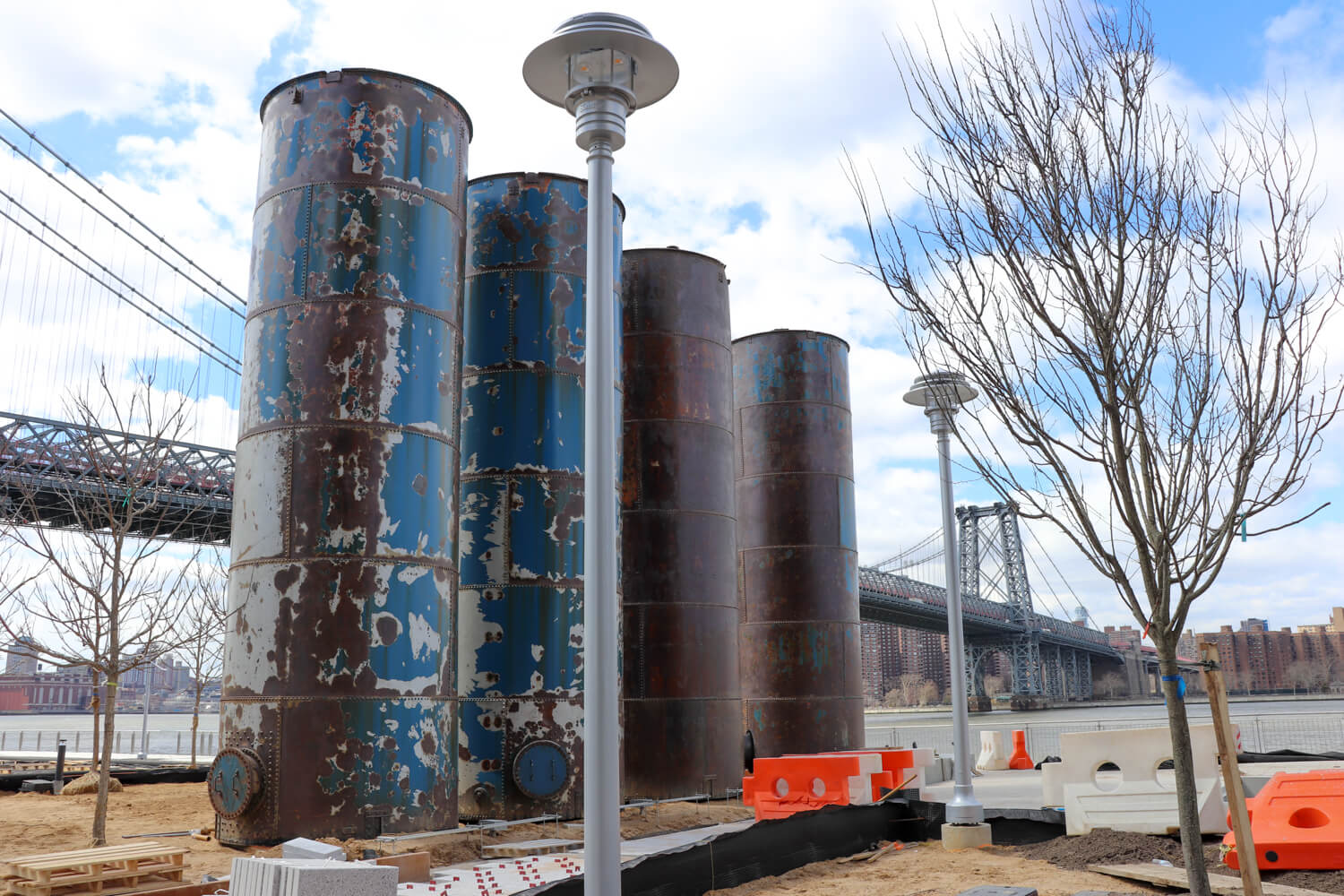
Further north, in front of the refinery that will soon become offices, designed by PAU and approved by the Landmarks Preservation Commission in November, there is a seating area facing the East River.
Past the refinery, roughly between North 2nd Street and Grand, is what is being called the Artifact Walk, where bits and pieces of the old factory will be on display. The center of this part of the park is an elevated walkway, built around 21 columns from a former warehouse on the site.
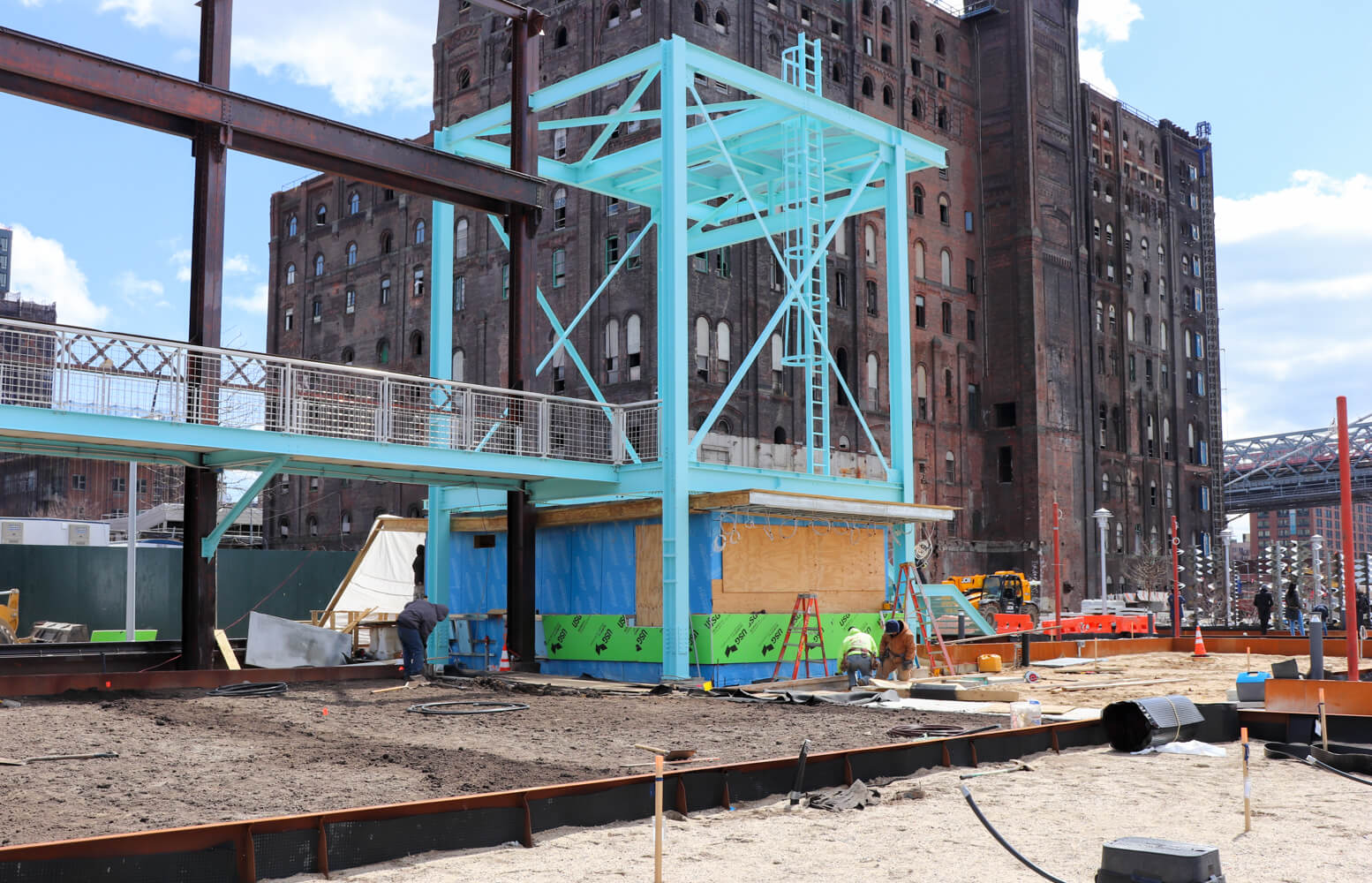
Salvaged artifacts include two 80-foot-tall gantry cranes, which were used to unload boats carrying the unrefined sugar, along with crane tracks, sections of the old screw conveyors, dials, meters, valves, tanks and bucket elevators.
Part of the elevated walkway is painted blue. At the base of the southern end of the walkway will be the home of a taco stand from restaurateur Danny Meyer, which will serve margaritas and have its own seating area.
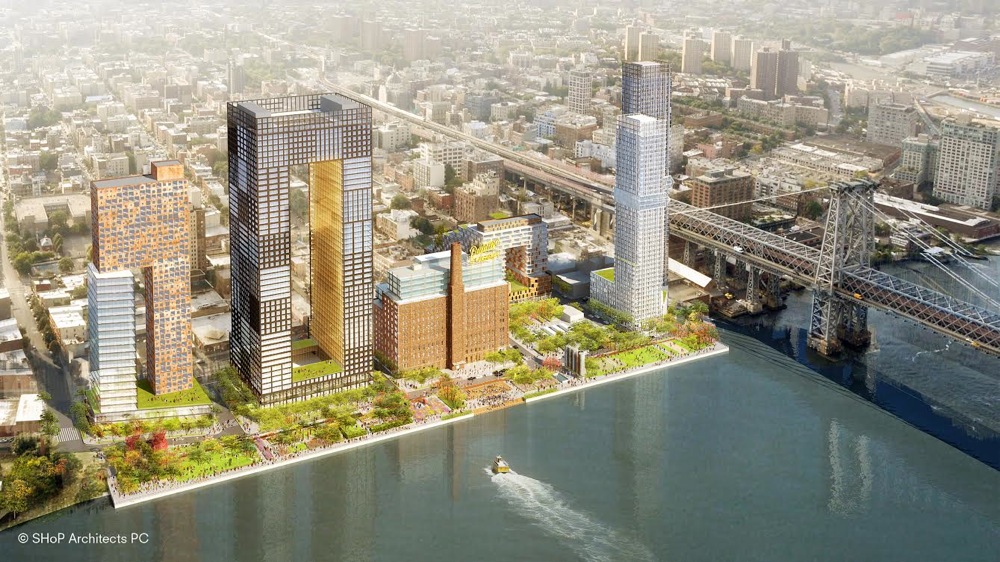
The open space on view at the moment may be severely altered once construction begins on the rest of the residential buildings planned for the Domino mega-development. Now that 325 Kent is built, construction has already begun at 235 Kent Avenue, on the north side of the park, with the rest of the buildings to follow.
The park and affordable housing helped Two Trees get public approval for a 2014 rezoning to build more densely on the site. The developer is delivering the affordable housing and the park early on in the project — unlike further north along the riverfront, where glassy towers have transformed the area but the much anticipated Bushwick Inlet Park is more than a decade overdue — a sore point in the area.
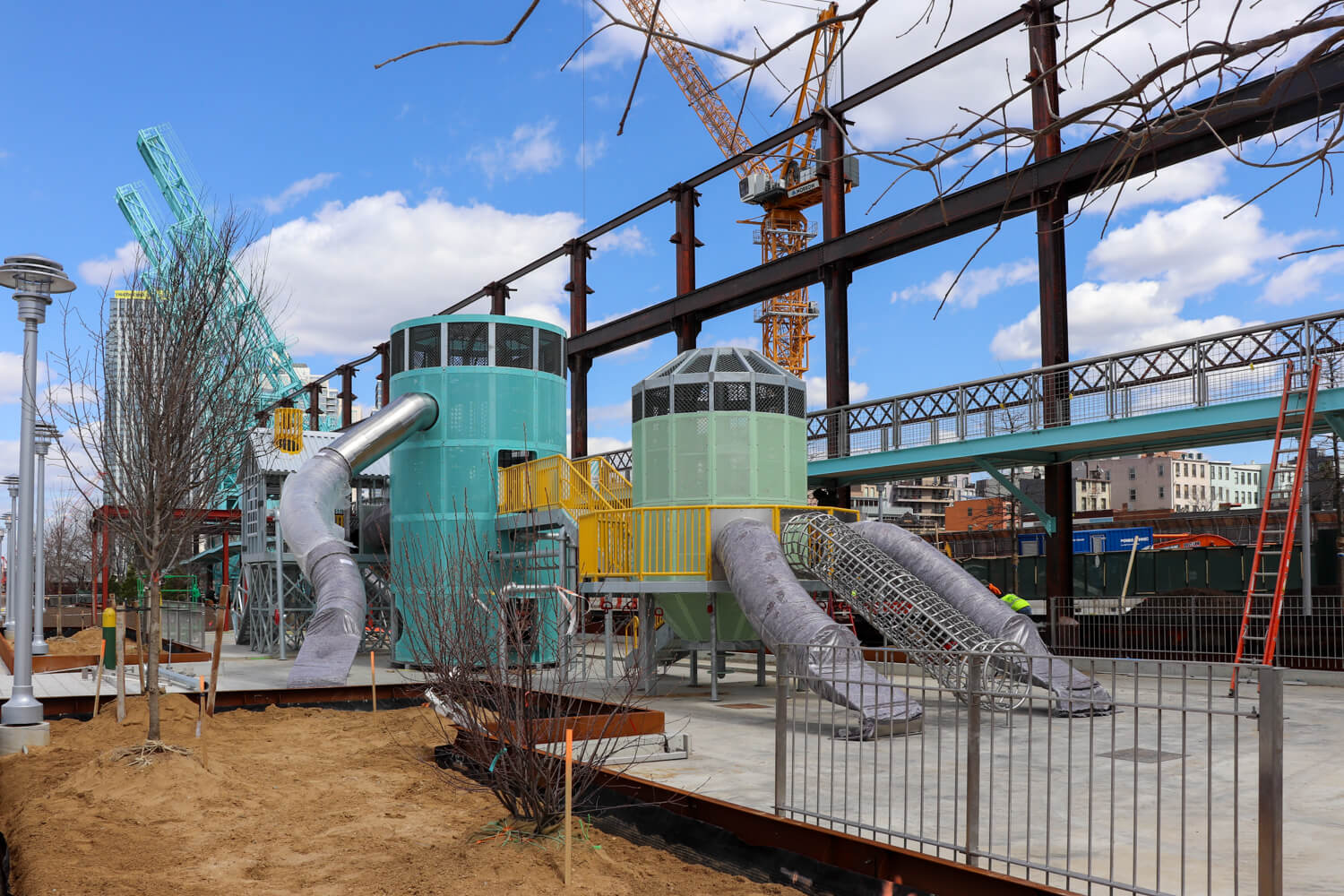
When complete, the redevelopment of the 11-acre site will include 2,300 apartments total, 700 income-restricted affordable apartments, retail space, and offices in the landmarked 1880s Domino Sugar Factory building.
Before the 2005 rezoning that transformed the waterfront with glossy towers a few blocks north of here, much of the shoreline in the area was a post-industrial wasteland, vestiges of which are still discernible in the popular and pocket-size Grand Ferry Park right next to Domino.
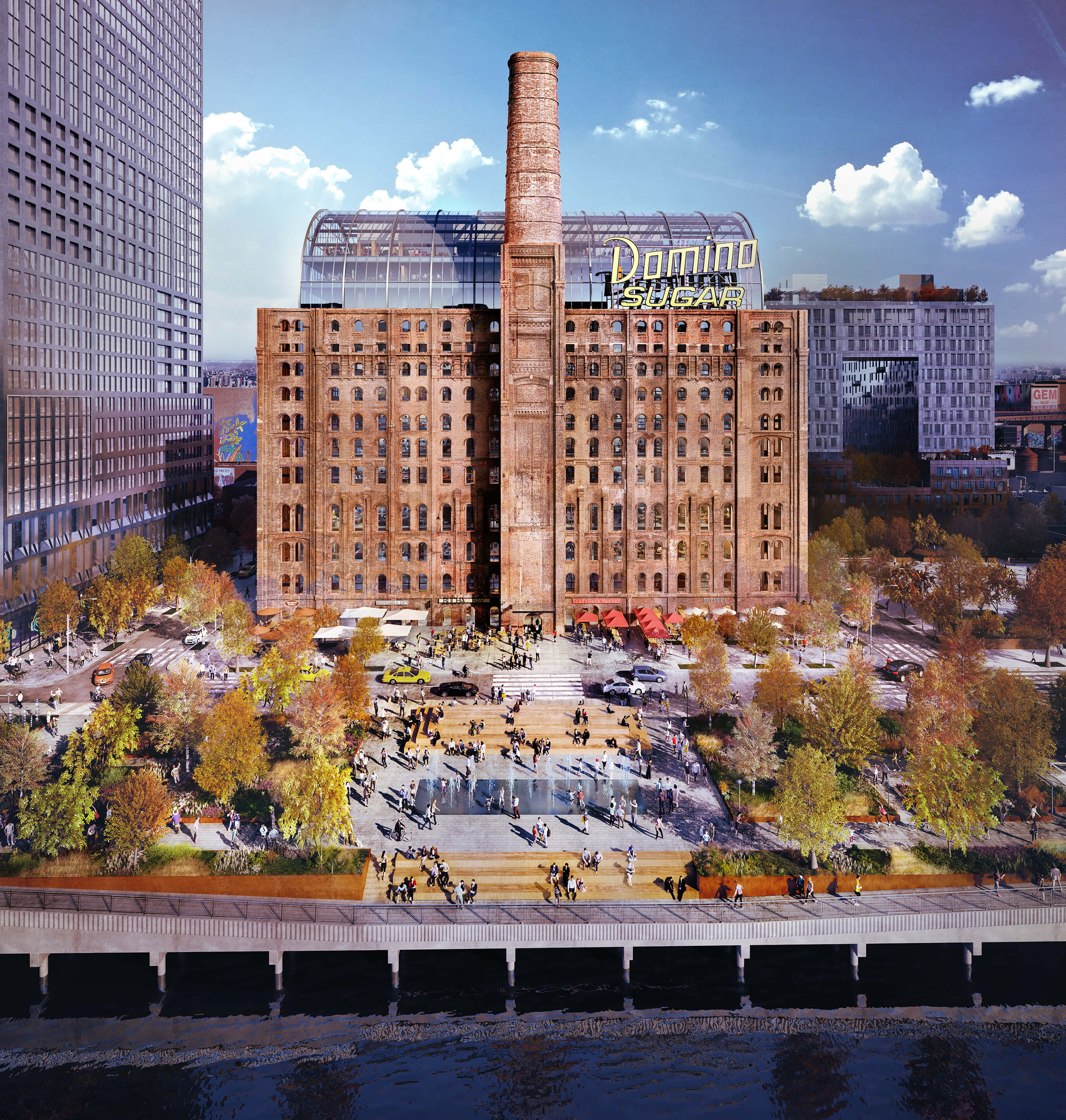
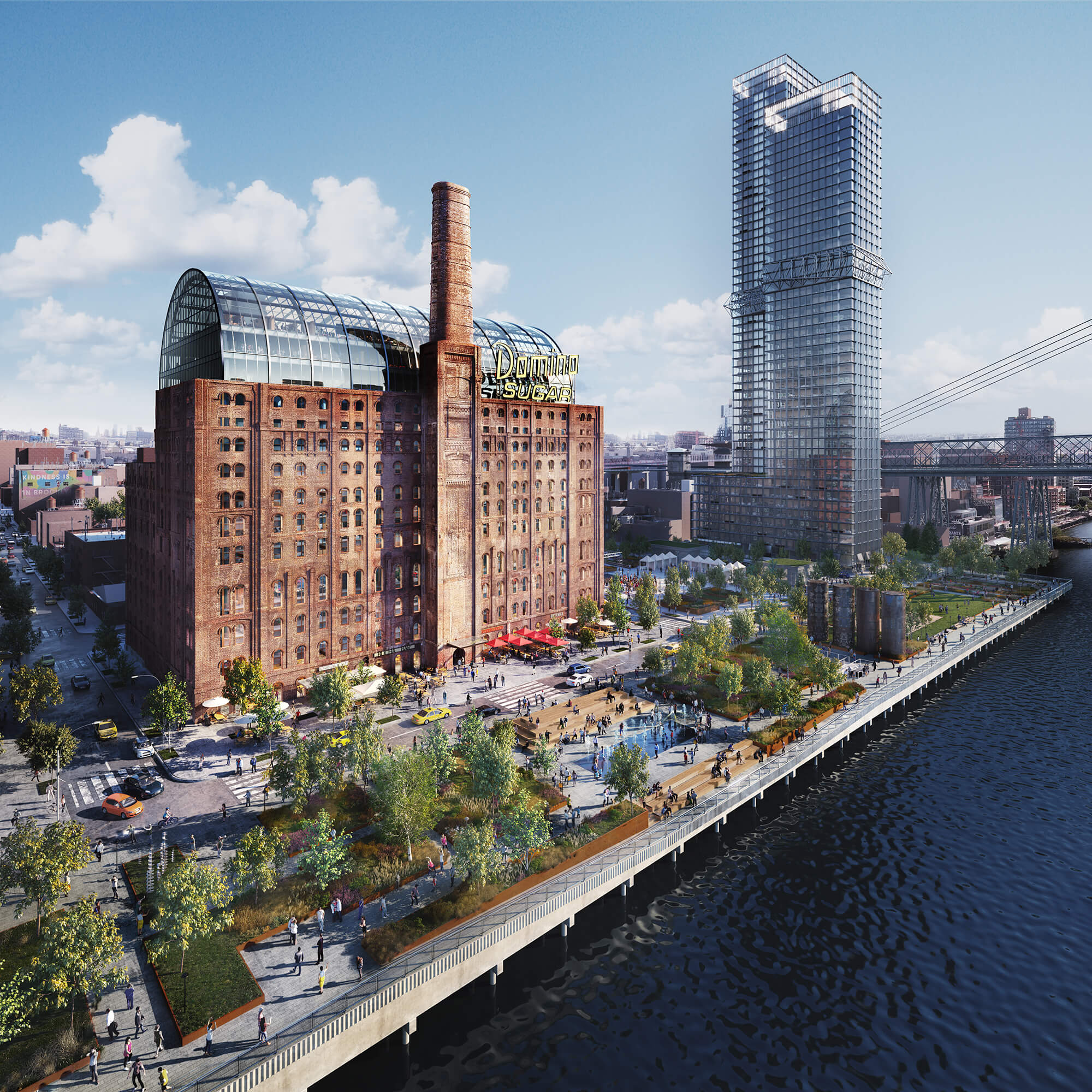
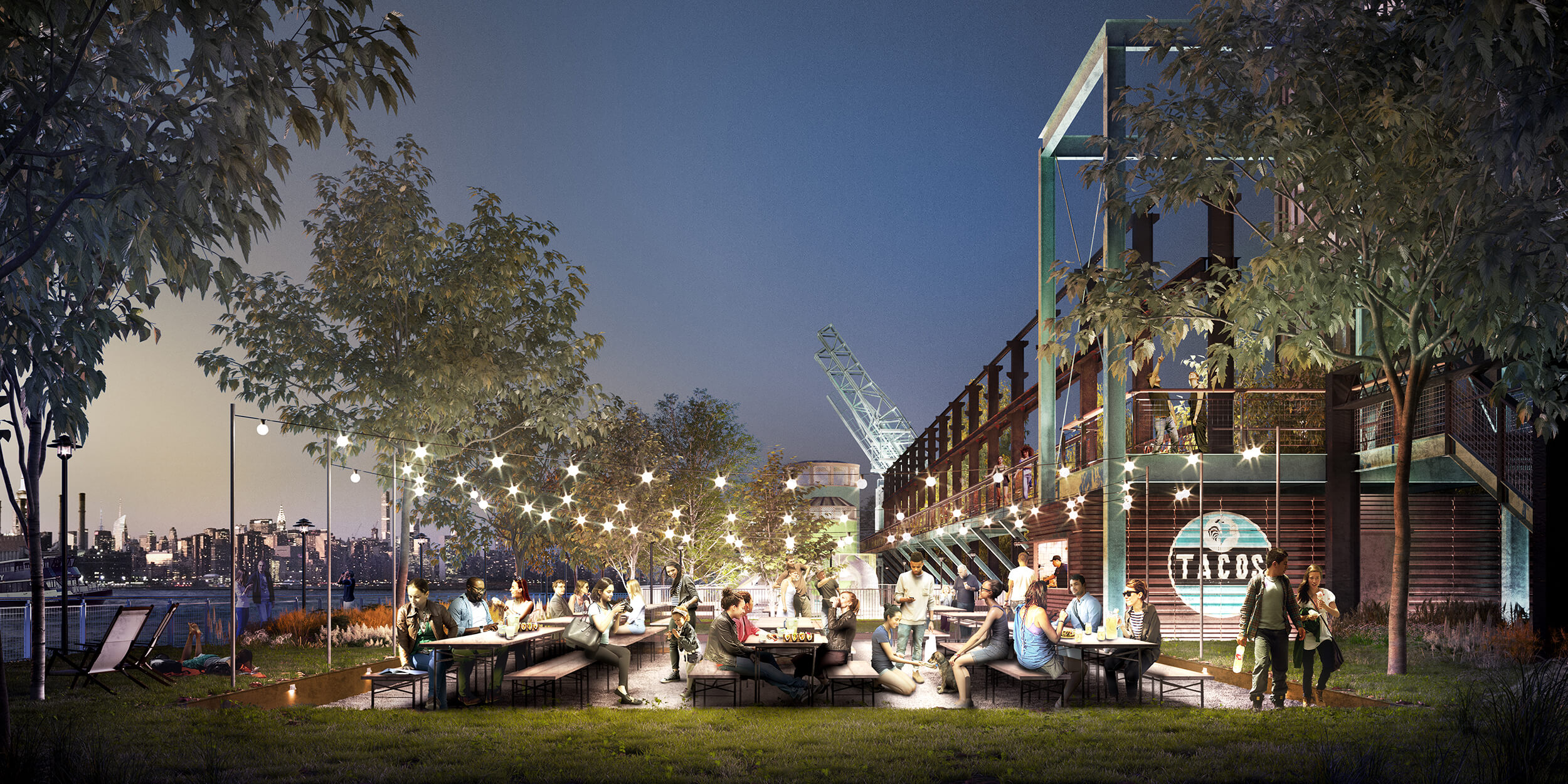
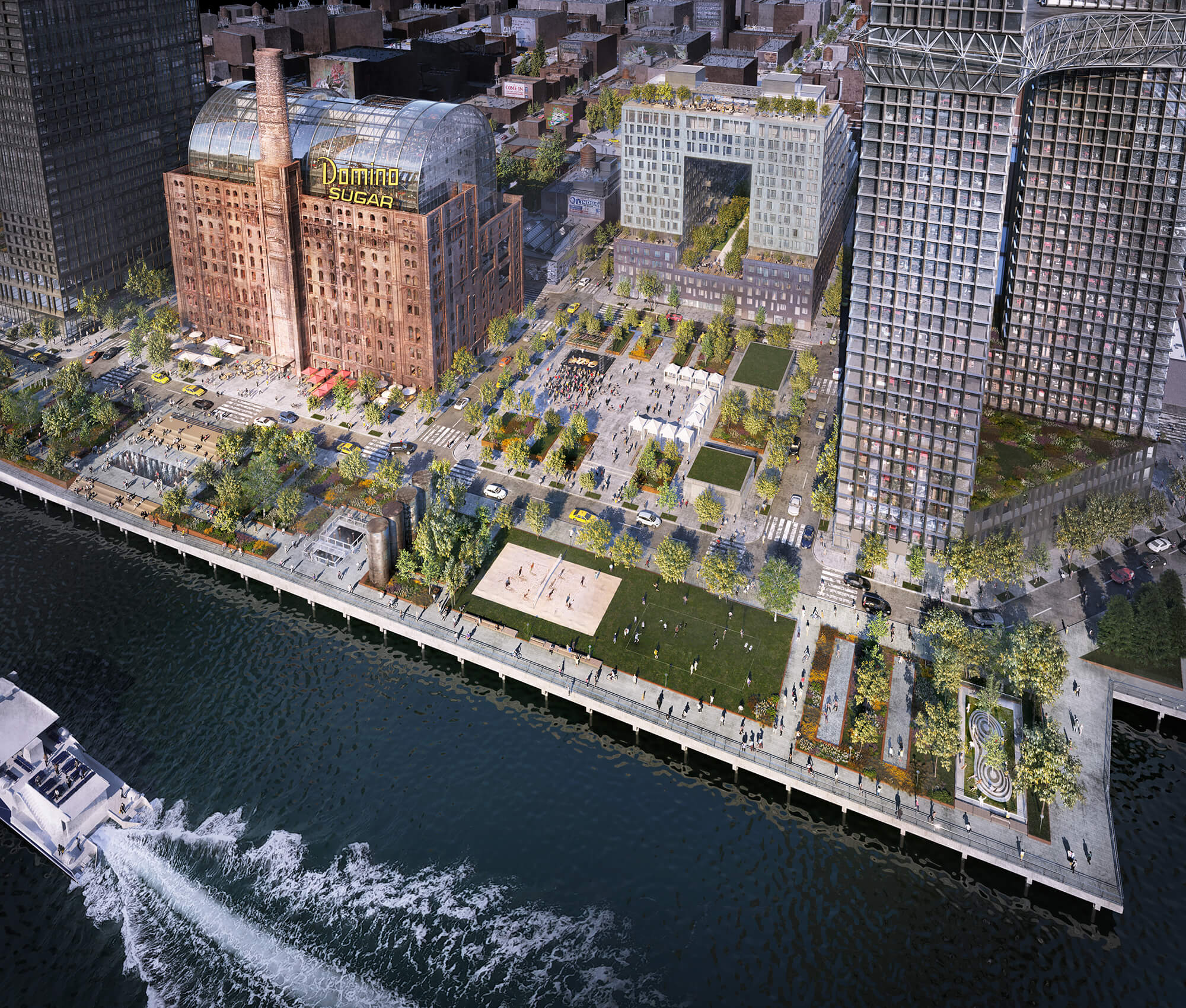
[Photos by Craig Hubert unless otherwise noted]
Related Stories
- Domino Sugar Refinery Redesign Approved by Landmarks Preservation Commission
- LPC Commissioner Asks If It’s Right to ‘Unbuild’ Landmarked Domino Refinery
- Unexpected New Plan for Domino Brings in Light With Glass Box Nestled in Landmarked “Ruin”
Email tips@brownstoner.com with further comments, questions or tips. Follow Brownstoner on Twitter and Instagram, and like us on Facebook.









What's Your Take? Leave a Comment